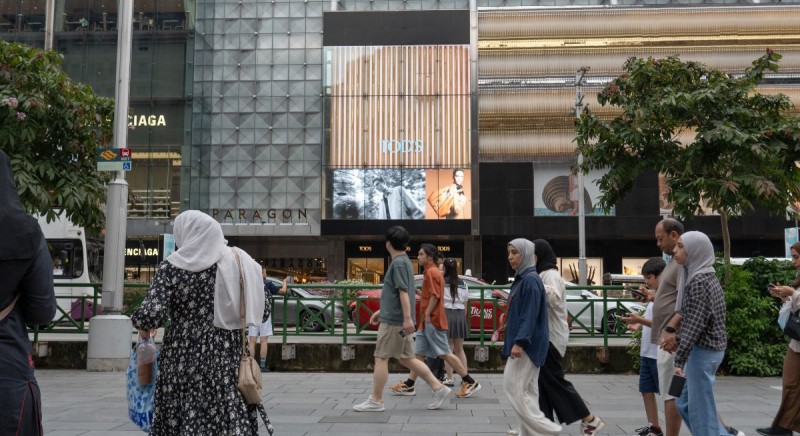Sectors linked to global trade – electronics, engineering and transport engineering – reflect a positive trend. Gan and Raveenthar note that the recovery in manufacturing is likely to have a positive impact on trade-related services and the finance & insurance sector is poised to “remain strong”, supported by ongoing global policy rate cuts and persistent disinflation.
Furthermore, Gan and Raveenthar have revised their full-year non-oil domestic exports (NODX) growth forecast from 0.5% to 1.5%, driven by a recent increase in demand from China and US. This reflects a positive outlook on Singapore’s NODX and industrial production.
The report identifies upside risks including stronger global economic growth. In comparison, downside risks include potential supply chain disruptions arising from geopolitical tensions and uncertainty surrounding the US presidential elections. The report notes that Trump’s possible re-election could result in higher tariffs, negatively affecting Singapore’s GDP growth.
Gan and Raveenthar expect inflation to remain “steady” in 2H2024. MTI and the Monetary Authority of Singapore (MAS) have kept their full-year core inflation forecast to average between 2.5% and 3.5%. Meanwhile, headline inflation is expected to average between 2% and 3%. The report predicts that core consumer price index (CPI) will remain between 2.0% and 2.5% this year.
See also: CapitaLand Ascott Trust and Sheng Siong Group enter STI reserve list in Dec quarterly review
While services inflation could “stay sticky” throughout 2025, Gan and Raveenthar admit that imported inflation is likely to moderate alongside easing domestic cost pressures. Ignoring the impact of the goods and services tax (GST) rate increase to 9%, both core and headline inflation are expected to range between 1.5% to 2.5% in 2024. However, it is expected that Singapore’s imported inflation will rise steadily in 2H2024 due to growing commodity prices in the next few months, according to Gan and Raveenthar.
Gan and Raveenthar have identified upside risks hinging on stronger than anticipated labour market conditions, which could spur demand-pull inflation from higher wage growth and disposable income. In comparison, downside risks may be centred on an unexpected economic downturn in the global economy. However, Gan and Raveenthar suggest that officials believe inflation to be manageable “amid a relatively sanguine Singapore-centric economic outlook.”
Gan and Raveenthar highlight that lower rates might be observed across developed market (DM) economies, particularly by the US federal reserve. It appears that the rate cuts will be led by the continued expectation for global disinflation to materialise in 4Q2024 to 2025. Gan and Raveenthar note their base case outlook for the US to cut its Fed Funds Rate with a magnitude of 25 basis points each in September and December, with a “potential hawkish official tone”.
Gan and Raveenthar are of the view that this may “mean little” for Singapore as Singapore’s monetary policy tool relies on the Singapore Dollar Nominal Effective Exchange Rate (S$NEER) framework rather than a policy rate framework. They believe that MAS will not change its monetary policy parameters in the October monetary policy committee meeting. RHB’s recent S$NEER recalibration shows that policy parameters are estimated at an appreciation of 1.5% annually, with a +/- 2% width.
Beyond Singapore’s GDP, inflation and policy prognosis, Gan and Raveenthar also noted several observations.
The report suggested an optimistic outlook on Singapore’s investment flows in 2024.
Further to the report, it is noted that the Johor-Singapore special economic zone has seen an increase in interested investors, given the high trade and investment volume between Malaysia and Singapore. The special economic zone would encourage flow of manpower and goods, spurring higher investment volume in both economies.
Gan and Raveenthar highlight global trade volatility as a key risk in 2025, especially in view of Trump’s proposed tariffs. While this could negatively impact Singapore’s “highly trade reliant economy”, it is acknowledged that Singapore remains a trade deficit economy against the US, suggesting a Singapore-centric tariff from the US may be a “tail-end risk”, the report notes. However, Gan and Raveenthar add that Singapore’s trade exposure to other Asean countries and China may result in second-order negative effects.




